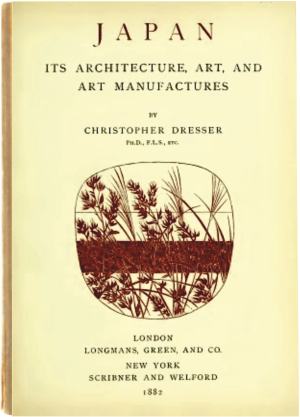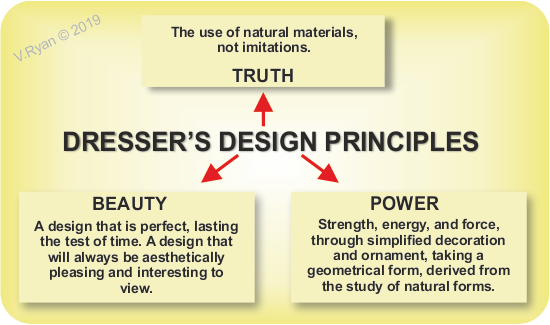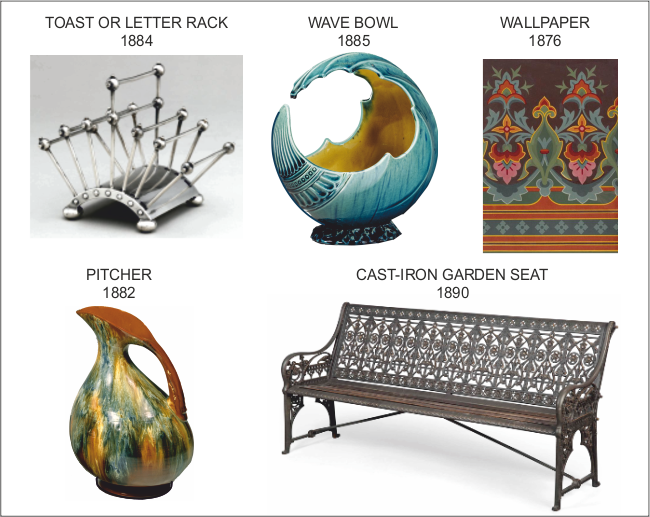| CLICK HERE FOR INDEX PAGE |
| |
CHRISTOPHER DRESSER
(1834-1904) |
V.Ryan © 2019 |
| |
| PDF FILE - CLICK HERE FOR PRINTABLE WORKSHEET |
| |
| PDF FILE - CLICK HERE FOR BOXED LEARNING EXERCISE |
| |
 |
| |
| Christopher Dresser is an important name, from the history of design, not only as a designer, but also as a philosopher of design. He was born in Glasgow and was educated in the ‘nature’ of design from an early age, attending the Government School of Design in London, from the age of thirteen. Arguably, he became one of the most influential designers of the nineteenth century, with his influence on the world of design, continuing after his death, throughout the twentieth century. |
| |
|
|
| |
| Dresser is known for his role in the Aesthetic Movement and later the Design Reform Movement. The Design Reform Movement was concerned, with the lack of design quality of British products, compared to European competitors. The Movement believed that shape and form should take precedence, over elaborate decoration and that form was determined by the function of a product. Ornament / decoration should be simple. Dresser followed this set of principles for many of his designs / products. |
| |
Dresser shared some of the values of the Art and Crafts Movement, in that he believed in designing products that were affordable for the mass market. However, he embraced modern industrial processes, unlike the Art and Crafts Movement, which believed in the individualism of the craft worker and hand made products.
Christopher Dresser was a prominent writer on the subject of Design. His books; The Art of Decorative Design (1862), Principles of Decorative Design (1873), Studies in Design (1876), and Modern Ornamentation (1886), influenced design movements for the next century. Dresser made an immense contribution to the development of the Anglo-Japanese style. In 1882, Dresser published his book, “Japan: Its Architecture, Art, and Art Manufactures”. This was to help popularise the Japanese style, that was further developed by designers such as Charles Rennie Mackintosh. |
|
 |
| |
|
|
| |
 |
| |
| Dresser designed products that were manufactured from a variety of materials, including ceramics, textiles, carpets and a variety of metal products. |
| |
| Dresser believed in three important principles, when designing a product: |
| |
 |
| |
|
|
| |
 |
| |
| |
| CLICK HERE FOR PRODUCT DESIGN INDEX PAGE |
| |
|
| |
|




